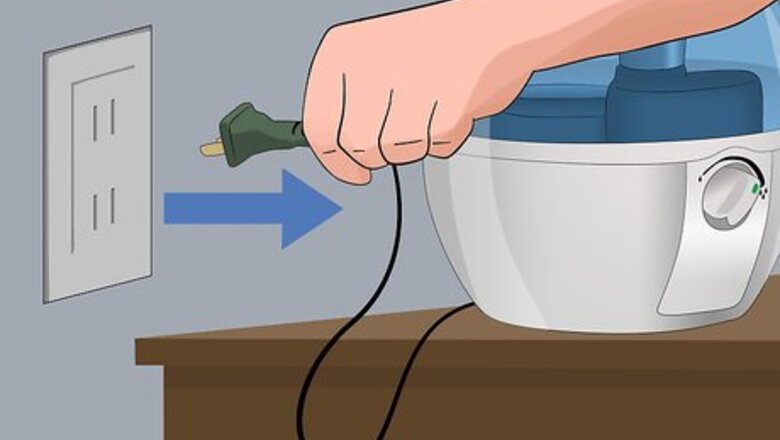
views
Rinsing a Reusable Filter
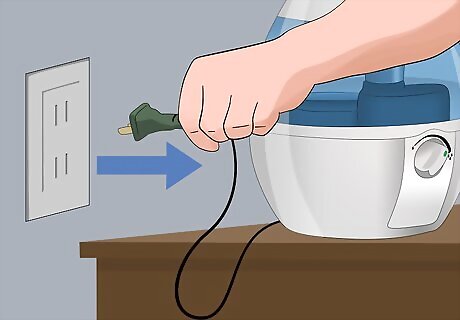
Unplug your humidifier. Before you disassemble your humidifier unit, make sure it’s turned off and disconnected from the wall outlet. You’re going to be handling a lot of wet parts, so this will help you prevent any accidents or damage. Choose a flat, water-resistant surface as your work area. A countertop near the sink is optimal. Always read your user manual carefully before performing any cleaning or maintenance on your humidifier.
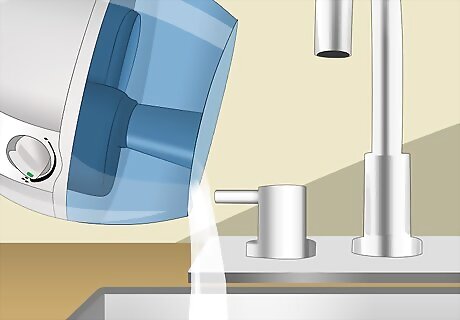
Remove and empty the water tank. You can usually access the tank by opening the top compartment of the humidifier. Most water tanks will lift straight off the base. Drain the old water out of the tank and set it aside. It may be a good idea to lay the water tank in the sink or on a folded towel in case it continues draining after you’ve emptied it. You can clean and rinse the tank separately later if needed.
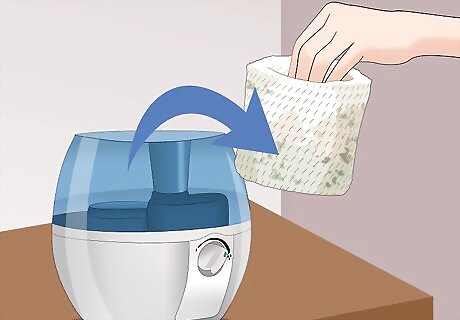
Take out the dirty filter. Removable air filters can most often be located inside the humidifier’s motor housing. Remove the outer casing of the unit and slide out the old filter. Look over the filter to see what level of cleaning it will require. Filters that are mildly dusty can be rinsed clean. If there’s mold or an excessive amount of mineral buildup present, you may need to use a vinegar or bleach-based cleaning solution instead. Disposable paper filters can simply be thrown away and replaced. These should be changed at least every 3 months.
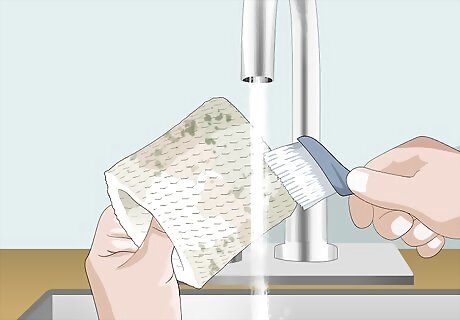
Rinse the filter with cool water. Rotate the filter under the stream to dislodge any traces of dust or dirt. Lightly brush away stuck-on debris with a soft-bristled brush or fingertip, but be careful not to apply too much pressure to the mesh. Once the filter looks clean, shake off the excess water. You should only ever use fresh water to rinse your humidifier filter.
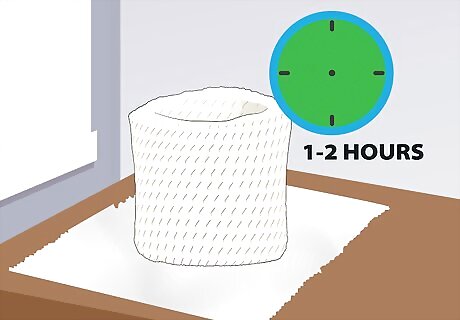
Allow the filter to dry completely. When it comes to drying a clean filter, air drying is the safest option. Attempting to speed the drying process along using another tool, such as a hair dryer, may cause permanent damage. Set the filter on an absorbent towel and check back in 1-2 hours. Mold needs moisture to thrive. Reloading your humidifier with clean water and a dry filter will prevent mold from returning. Once the filter is dry, you can reassemble and start using the humidifier again.
Cleaning a Dirty Filter with Vinegar
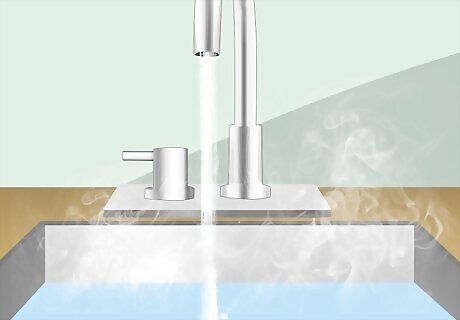
Fill a sink or bucket with warm water. Run enough water to completely submerge the filter. For deep-cleaning tasks, warm or hot water will work best. Make sure you unplug and drain the humidifier before removing the filter.
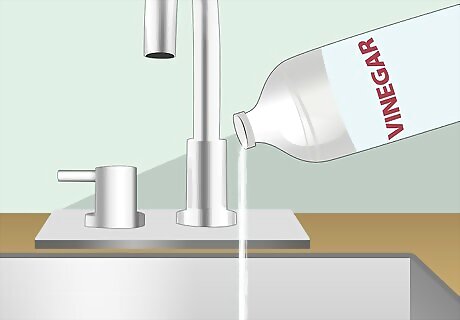
Pour in distilled white vinegar. Add one part vinegar for every two parts water. Mix the vinegar and water gently by hand. This solution will be effective for cleaning and disinfecting filters with small amounts of mildew or discoloration. Vinegar is naturally acidic, making it a safe alternative to harsh chemical cleansers. Especially moldy filters should be treated with bleach or thrown away. You can also use a mixture of citric acid and water to clean your filter.
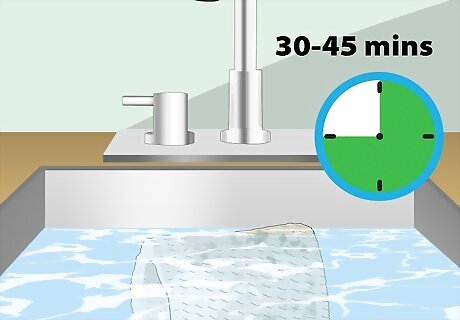
Soak the filter in the vinegar solution for 30-45 minutes. Submerge the filter and leave it to sit. The vinegar will gradually begin working to dissolve small mold spots and other stuck-on residue. You should let the filter soak for at least half an hour, though you can also leave it for an hour or more. Never use formulated cleaning solutions on a humidifier air filter. These can deteriorate synthetic materials.
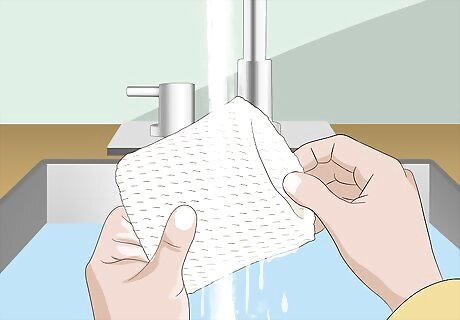
Run clean water through the filter. After the filter has had a chance to soak, remove it from the vinegar solution and rinse it thoroughly under the faucet. Try to wash away as much loose gunk as you can. Give the filter a shake and set it aside to air dry. Smell the filter after rinsing it to make sure you’ve gotten out all of the vinegar. Do not squeeze or wring out damp filters.
Sanitizing a Filter Using Bleach
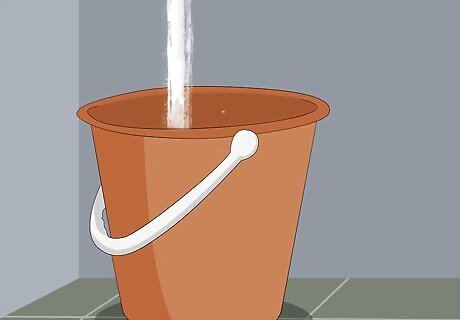
Fill a large container with water. Run a couple gallons of lukewarm water into a sink or bucket. Since you’ll be working with bleach, you’ll need a higher concentration of water than you would when cleaning with vinegar. Make sure there’s nothing in your work area that might be damaged by spilled bleach. Bleach will need to be used to clean humidifier filters with extensive mold or mildewing. Avoid using hot water, as steam can cause the release of bleach fumes.
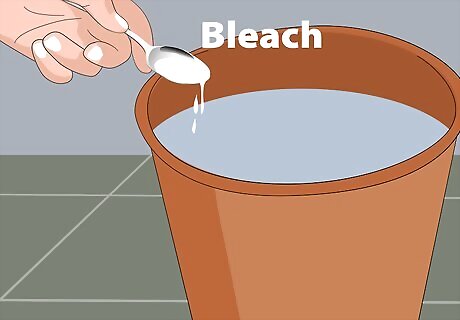
Add a splash of bleach. You’ll only need to use about a teaspoon of bleach for every gallon of water. This will sufficiently dilute the bleach so that it can be used as an effective yet non-harmful cleaning agent. Be careful not to overdo it—too much bleach may eat right through a plastic filter. When handling bleach, always wear gloves and work in a well-ventilated area. If possible, equip a respirator and eye protection. Avoid coming into contact with the bleach solution with bare skin.
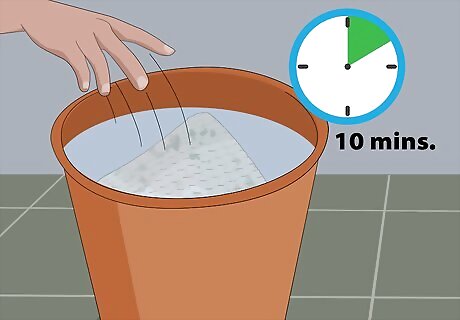
Soak the filter in the diluted bleach for 10 minutes. Dunk the dirty filter into the solution and make sure it’s fully submerged. Bleach has potent cleaning and sterilizing properties, so no scrubbing is necessary. After a short soak, your humidifier filter will look as good as new. If there’s any mold, mildew or mineral deposits remaining after the initial soak, mix up a fresh batch of solution and soak the filter for another 10 minutes.
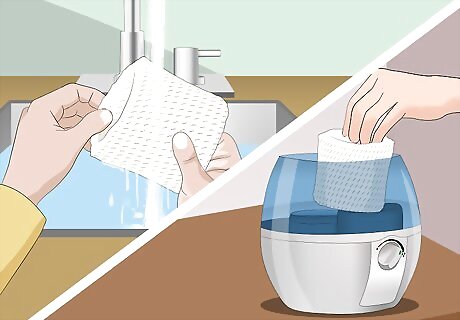
Rinse and dry the filter. Carefully remove the now-clean filter from the bleach solution and rinse it under warm water. Turn the filter slowly and aim the stream so that it flows through the filter from every angle. This will ensure that it comes out free of both mold and bleach. Air dry the filter, then return it to the humidifier. You can also make sure the filter has been properly rinsed by swishing it through a sinkful of clean water. It’s important that you wash away every remaining trace of bleach, or it could be released into the air when you operate your humidifier again.















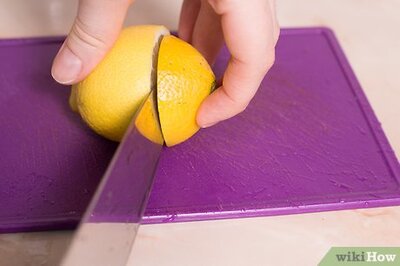
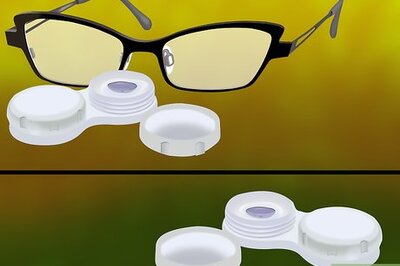


Comments
0 comment